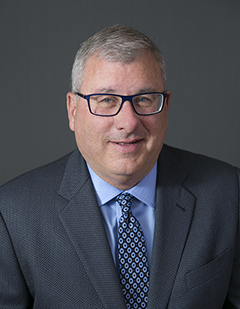
The last year has provided me with the opportunity to meet the riders, employers and residents who depend on these services to connect employees to jobs, students to classes, customers to businesses and make our communities more livable.
As the County continues to grow, so does the challenge of ensuring that our communities are benefiting from a broad range of mobility options that reflect a diverse set of needs. I prefer to view challenges as opportunities, and in this case we have an opportunity to make great progress toward the world class transportation network that San Mateo County deserves.
Over the next several years, critical choices will be made that determine what the future of transportation in San Mateo County looks like, and we need your help.
This report to the community outlines the key issues on the horizon and reflects my commitment to openness about what we do at the District and a dedication to involving Peninsula communities in that work.
The San Mateo County Transit District is a consolidated agency with one staff managing three agencies with distinct missions, separate budgets and independent boards of directors. Nearly 700 people work for the District and manage combined budgets of more than $500 million.
Collectively, SamTrans, Caltrain and the San Mateo County Transportation Authority, the three business units that form the Transit District, provide bus, shuttle and paratransit service throughout San Mateo County, rail service between San Francisco, San Jose and Gilroy, and administer a half-cent sales tax for transportation improvement projects that reduce congestion, improve safety and provide service to all county residents.
Our transit services carry more than 100,000 people every weekday. People depend on us to get them to work, school, the store, the doctor, ball games or an evening with friends. By giving people an alternative to their car, these services reduce congestion by up to 400 million road miles a year.
Members of the SamTrans Board of Directors are appointed and include elected officials and members of the public with diverse geographic representation throughout the County. They are dedicated and focused on our public mission and creative solutions to our challenges. It is important to them that I communicate and engage with you. These members make decisions and set policies that have earned the agency a reputation for excellence that places it among the safest, most reliable, cleanest, best maintained bus services on the road today. This reputation is also a tribute to a dedicated group of employees. These bus operators and mechanics routinely go decades without an accident or an injury, and they take seriously the responsibility to deliver San Mateo County residents to their destination on time and safely.
SamTrans operates 76 fixed routes serving every city in the county. It also operates Redi-Wheels paratransit service, for the county’s senior and disabled residents in need of a safe, reliable, accessible mobility option who are unable to use fixed service routes. As San Mateo County’s Baby Boomer population ages and we see the beginning of a long-predicted “silver tsunami”, Redi-Wheels is on pace to serve a record 360,000 customer trips in 2016. The service has become more important than ever. Unfortunately, it has also become more expensive. Today, Redi-Wheels customers pay a $4.25 fare for a ride cost that averages $50 to provide. The program is fortunate to receive funding to cover a significant share of these costs, but additional resources are needed, and will be especially so as the population and demand increases.
Caltrain is the public transportation backbone connecting San Francisco and Silicon Valley. The service is administered and managed by SamTrans, but it is owned and governed by three partners – SamTrans, the Santa Clara Valley Transportation Authority and the City and County of San Francisco. These partners jointly contribute to the railroad's operating and capital budgets and they each appoint three members to serve on the Peninsula Corridor Joint Powers Board, which makes decisions and sets policy affecting the operation of system. Thanks to the dedicated work of this Board, Caltrain has experienced several years of consecutive record-setting ridership growth.
Today, more than 60,000 riders depend on Caltrain every day and fares from those riders fund over 60 percent of the system’s operating budget, which makes Caltrain’s farebox recovery second only to BART in the region. However, demand has quickly outpaced the capacity of the service, and the system’s aging infrastructure will require substantial investment to improve reliability and reduce breakdowns.
When it comes to transportation, San Mateo County is a self-help county. In 2004 voters approved by a 75 percent margin the extension of a 20-year, half-cent sales tax to pay for transportation projects and programs. These funds are administered by the San Mateo County Transportation Authority and governed by the Authority's Board of Directors, which is composed of elected officials representing areas throughout the County. The Board provides direction to ensure that funds are invested in a wide range of improvements including transit services, highway improvements, local repairs to streets and roads, local shuttle services and bike and pedestrian improvements throughout the county.
This local investment leverages local, regional, state and federal funding and as congestion on highways and local streets and roads continues to increase, careful consideration about how these funds are invested is more important than ever.

Since the 2013 changes, ridership has trended upward, but with two years to assess some of the results, more adjustments will be explored. In particular, SamTrans will be looking for ways to better serve markets that have limited mobility options, including senior and youth riders. We will also be introducing improvements that make the system easier to use such as mobile ticketing, real time departure and arrival information and electronic payment options for products like the Summer Youth Pass.
Sustainability continues to be a core value for our agency and this year we will be advancing efforts to launch the County’s first electric bus pilot program. Zero-emission bus technology continues to evolve and as the State moves forward with plans to improve air quality, we are looking forward to delivering a cleaner bus transportation alternative to San Mateo County communities.
SamTrans will also be considering partnering with the private sector to explore the conversion of underutilized property into better community assets. In some cases, this may mean creating new, affordable opportunities for people to live close to major employment centers and transit connections. In other cases, it means partnering with employers like Facebook, who recently committed funding to study options to equip the Dumbarton Rail Corridor with new transportation connections that are desperately needed to address increasing east-west traffic congestion.
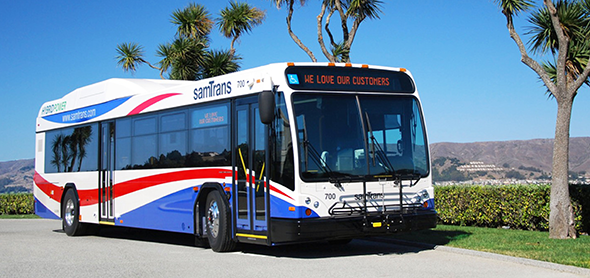
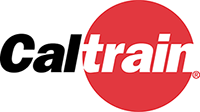
When complete, electrification of the corridor and the introduction of new, high performance trains will almost double the capacity of the current system, and as a result will reduce vehicle miles traveled by 619,000 miles everyday. The system's greenhouse gas emissions will be reduced by 97 percent, eliminating over 176,000 tons of CO2 along the corridor.
These improvements are long overdue, and they would not be possible without investment from the California High Speed Rail Authority. In 2012, we worked with Peninsula policymakers to ensure that high-speed rail would be blended with Caltrain service on a system that is primarily two-tracks and substantially within the existing rail corridor. This year, planning for future high-speed rail improvements will begin, and we look forward to working with the Authority to ensure that Peninsula communities are connected to the rest of the State in a way that maximizes benefits and minimizes impacts.
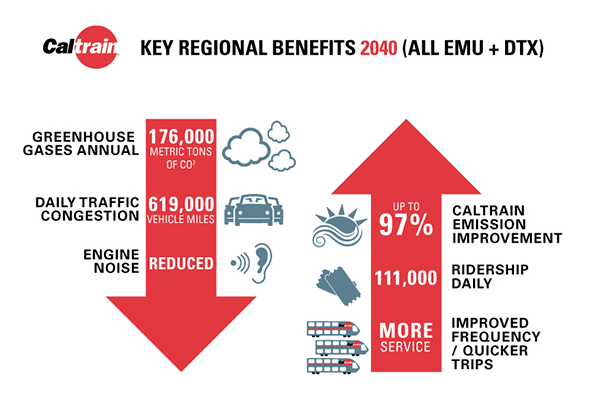
These changes are still several years away, but in the meantime, Caltrain is working aggressively to address today’s challenges. Last year, Caltrain began adding railcars to help relieve overcrowding on our most popular trains. Last week, more railcars were added, expanding bike capacity on a system that may carry more bikes than any other commuter rail system in the world.
Caltrain, like every transit system in the country, is challenged by aging infrastructure and consistently underfunded repair and maintenance programs. Breakdowns are an incredible inconvenience for a Caltrain customer base that deserves more reliable service. While we are advancing efforts to modernize the system, we cannot ignore the needs of the existing infrastructure. In the absence of adequate resources, Caltrain has revised maintenance procedures and developed new protocols to try to minimize the impact on customers when breakdowns occur.
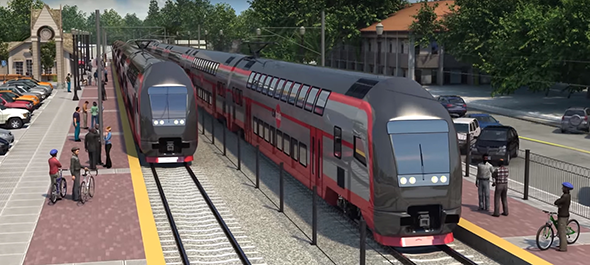

The 101 corridor is arguably the most economically productive in the State. The surrounding communities are responsible for 14 percent of the State's GDP, 20 percent of its tax revenue and are the birthplace of over half of California patents. Traffic congestion along this corridor isn’t just an inconvenience; it is a legitimate threat to the continued economic competitiveness of the region.
Fortunately, the same employers that helped advance the Caltrain Modernization Program by forming the Caltrain Commuter Coalition are working with us to explore improvements on 101. The TA is looking at a number of options for reconfiguring the corridor with a goal to reduce congestion and improve commute times along one of the State’s most important highway facilities.
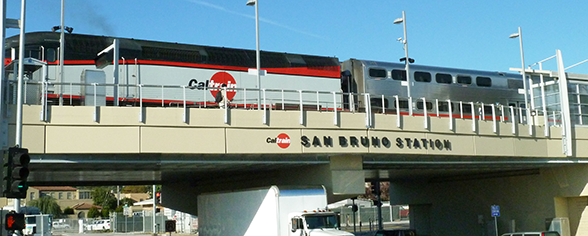
One of the fundamental commitments I made when I joined the District was greater transparency about our agency. When it comes to all of these efforts, I see it as our obligation to ensure that the public is aware and confident that we are working effectively on your behalf. Progress cannot happen without full participation from the people who will benefit most. As a public agency, we have a responsibility to engage.
The SamTrans team is looking forward to actively seeking opportunities to share information, create public dialogue and seek community input that will help inform our goals, strategies and everyday decisions.
There is no doubt we have challenges. And in many cases, the solutions are not yet clear. But we also have opportunities to make unprecedented improvements in the quality of life for every San Mateo County resident. I am confident that we can build a transportation future that we will be proud of for generations to come.
Last updated: 4/7/16 - jsb